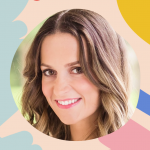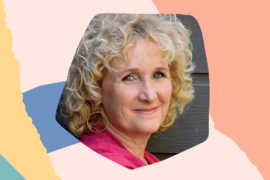Key Takeaways
- Why Brittany’s hugely successful personal training services became unsustainable – and why this is an extremely common problem for trainers and coaches in any industry.
- The moment Brittany realized she needed to do something different.
- Why the first version of your membership might “suck” – and why that’s completely okay, so long as you’re authentic, transparent, and provide your clients with the information they need.
- How to set the price you want to be paid from the outset – and why her attempt at launching with a lower price point was a disaster.
Free Give
FREE Guide – Launch & Grow a Profitable Membership Site
Ready to reclaim your time and attract more monthly paying customers? Our step-by-step guide will show you how to build a membership site that turns your passion into recurring profit. Click here to download!Memorable Quote
- “I love what I do. I thought, ‘There has to be a better way to serve people.’” – Brittany Byrd
- “If I can’t get someone results, I don’t deserve their money.” – Brittany Byrd
Episode Resources
Transcript
Read The Transcript
Shelli Varella: Brittany Byrd, welcome to the It’s a TRIBE Thing Podcast. How are you, buddy?
Brittany Boyd: I am great. Thank you, guys, so much for having me.
Shelli Varella: Oh my gosh, we in the TRIBE community, we’ve been tracking you for some time so I’m really excited to finally have the opportunity to have you on and you’ve got some gems and some bombs to drop today that are kind of flying in the face of what some people think. And so, we’re going to get to that later but I’m hoping you can start by telling our amazing audience who you serve, what you do, and how you came to have a membership site, like what is your origin story when you started?
Brittany Boyd: Okay. So, when I first started 11 years ago, like many people, I was a personal trainer. So, I worked for a commercial gym and I started very early in the mornings. I had to say yes to every single client that came in the door, regardless of what time they wanted to meet you at because you had to serve your customers. So, I would start as early some days as six in the morning and my last clients would be as late as 8:00. So, it was some really, really, really long days. And at first you hear that’s how you build up your clientele base, so that you can have a full 40 hours a week of client, but then what I realized was after a year, none of those clients move their times because they’re so used to having those times and then you get stuck working 6:00 in the morning until 9:00 at night. And that and like, I absolutely love what I do, but it was tough. So, that was my first step. My second step was I decided to leave the corporate gym and I decided to start my own thing. So, I started teaching boot camps, outdoor boot camps. I rent local churches and high schools.
You know, and that got going a little bit better because I was making a little bit more money but I was still kind of working all the time because you’d have classes in the morning and classes in the evening. And you’re really limited to what you could do like what hours that the churches were available, or if it was raining out. Where are you going to go when it rains out? And then the problem with that, that I realized was you had 10, 15, 20 people in a class, and while they were enjoying the workouts, you didn’t really have a huge opportunity to talk to them about what really mattered, which was the nutrition and the mindset. So, then from there, I opened my own gym and that was great because then you get to make all the rules but then same thing happened, you get back to that point where you’re trying to make money at the gym so you take clients the same way you did at the corporate gym. You take them any and every time and then you’re back to working 6:00 in the morning until 9:00, 10:00 at night. And since you own the place, you still have to clean and do all the billing, everything else, all that other stuff.
Shelli Varella: Now, how old were you when you start this gym?
Brittany Boyd: So, I’m 32 now, and I was 23 when I opened my own gym, which looking back is pretty crazy because it was quite like I had $70,000 worth of equipment in there. It was a beautiful, beautiful, like personal training studio. And like I was making money the very first month that that place opened like so it’s not that I didn’t have the customer base. It was actually that I just didn’t actually have enough time to be able to serve more members because I was working so much. So, I started doing classes and like grouping people into like groups of three, groups of four, groups of 10 so I could take on more members. But then after three years in business, I was just burnt out. I realized that I basically had blown through my 20s and I had been making great money but I didn’t do anything because all I did was work all the time. And when I actually had time off, I was too exhausted. I would just sleep like I would sleep all weekend. And then on Sunday, I’d be like, “Oh, man, I’m going to have to go into the gym,” because I need to clean and I need to do like bookwork and I need to write programs, and it was just exhausting. And I was like, “There’s got to be a different way.”
As I was mentioning to you, there is a local coach that is an incredible, incredible coach and they are in their 60s now and they’re still doing that. They’re working. They’re starting their day at 6:00 and they’re finishing at 7:00 at night and I’m like, “I can’t imagine doing this until I’m 60.” And I’m like that really frustrated me because I love what I do and I’m so passionate about it and I was like, “There has to be a better way to serve people.” Because I noticed every single step of the way that there were always obstacles that clients had. So, number one being the time. If people couldn’t make time, then you either had to do another class or you had to stay later for them, or you had to come in earlier. And the problem I found with that was that then you’re just working all the time and then some people, they couldn’t make that time, but they also couldn’t pay your one-on-one rate. So, then you’re kind of not able to help someone in that scenario. And then you also have the people that sign up for those classes but then they couldn’t make, like, for example, they got called into work or they couldn’t find a babysitter, and then they’ve already paid for a session, but they couldn’t actually come in.
And when it comes to results, if you’re missing one, two sessions a month and your workouts are only happening with your coach, then they’re not really, you know, it’s going to take them longer to actually see those results. So, that was another obstacle that I found when I had the gym, when I did the boot camps, and when I worked for a corporate gym, and then also the cost too. Like when I was working for the corporate gym to train with me, you had to be willing to spend at least $860 a month to train with me, which is absolutely absurd because when you think about it, like so, I know you live in Toronto, I live in the middle of nowhere, but like that’s like someone’s mortgage payment down here like that is crazy. Crazy, crazy, crazy. And the crazier part is that it’s literally just for somebody to hold you accountable for that one hour that you’re with that session. And I know that it’s not that one hour that people have the problem with. It’s every other hour of the day.
And it’s like that saying where you can give a man a fish and he’ll eat for a day, or you can teach a man to fish. And I just felt that there was such a problem in the industry because so there was a trainer that I worked with. And she was named one of the top 10 trainers for the company that I worked for. And I was like, “How the heck did she win where she placed top 10?” And I remember looking at her clients and being like, “These clients have been with her for four years, and they look exactly the same. How did she get top 10?” And it was because of the amount of money she made the company. It wasn’t based on client results. And I thought, “That’s not who I am.” If I can’t get someone results, then I don’t feel that I deserve their money. And there are these people that are charging 800 and then this trainer at the time was like three levels ahead of me, so she was charging with $40 more an hour than I was. So, that’s close to like $1,600 a month that these people were paying to not see results and I thought, “That’s insane.”
Shelli Varella: Well, it had to be also really frustrating because if you opened a gym at 23, here’s what you’re not lacking or missing, “You’re not lacking or missing ambition.” And for somebody with your drive, with your resolve, with your integrity to get transformational results for your clients, that had to be super frustrating because as you’re trading time for money, you only have the capacity to serve so many people.
Brittany Boyd: It was so frustrating. So, I’ll tell you kind of the turning point for me, that really frustrated me. So, there was a family member that went into this corporate gym and they are on disability, and it didn’t work and I remember hearing in the back room because he worked for a corporate gym. You know, when you sign up, they try to sell you on 6 or 12 personal training sessions and I think it was at the end of the month so everybody was trying to hit their monthly quotas and I edited her last name, so they didn’t know anything. And they had, she obviously couldn’t afford to buy personal training, which I totally understand. And I remember in the back room, they had said, they were like, “Oh, this person should stay fat.” And I was like, “What?! This person like actually has a disability. They literally go to the food bank to get food and of course, you know, the fact that they are buying this like that they’ve gone out and spent your $40 a month to join this gym, and you’re getting upset at them because they didn’t buy your personal training so you can make an extra $25 a month like this month on your commission?”
I was like, “I think you forgot about the reason why all of us are here.” If I could do my job and have all my bills paid for and be able to buy the things that I want, like I would do what I do for free because I absolutely truly love it. But you have people like that, that just really to me just like wrecks the industry.
Shelli Varella: So, what was the point when you thought, “Okay. There’s got to be another way,” and ended up pursuing a membership site because I want to get into how you run yours in a second. But I’m curious as to how you stepped over that precipice to say, “Okay, I am going to do something different and there is a better way.”
Brittany Boyd: So, funny you say that because one of my girlfriends she had told me that she had – because she, same thing, was living in another area and she was telling me that she had started charging $30 for a program to be written online. And I was like, “What?! $30?” I’m like, “That’s nothing.” At that time, it would take like an hour to write a workout and I thought, “And you’re charging $30 and you’re having all these people.” I think she had like 30 people. I’m like, “Man, that’s pennies on the dollar. You can’t make any money at that,” because you think like that’s nothing if that’s all of your clients. And I said, “Well, why don’t you try to charge like $100 a month?” And she’s like, “Oh, no, I can’t charge $100 like that’s too much. No one will pay it.” I’m like, “How do you know that? I’m like, “I at the time like I was paying somebody to write my program. I think I was paying $150 a month and it was just a program that was at. No additional advice, support, anything.” And I was like, “So why wouldn’t people pay more than that?”
So, I only have like two months left on my lease, on my three-year lease at the gym, and I said, “You know what, I’m just going to try it,” because I had developed a pretty big, like not a pretty big email list. I think I had like 800 people at the time and it was just like people that had done a program before or something. And so, what I ended up doing was I sent an email saying, like, “Hey, I’m going to do this beta testing program. I need 30 people to sign up. And you’ve got to submit like before and after photos, and it’s an online workout,” and blah, blah, blah. It was literally just like, at this time, there’s like no such thing as a membership site because I think it would have been back like 2012-ish. And so, what I had done had I had what do you call it? I’m sorry. Dog barking threw me off there. I had done like a Word document for people. So, it was just a Word document and everything was done like by email. That was it. So, that was like my first like beta testing membership site.
So, I had 30 people sign up for that and it was awesome. It was so amazing because the people could do the workouts whenever they wanted so they didn’t have that problem of being able to miss a session. So, and I had recorded like YouTube videos of like at my gym of how to do each exercise. So, it was like here’s the exercise name and then here’s a YouTube link to how to do it.
Shelli Varella: That’s brilliant.
Brittany Boyd: Yeah. So, it was like super basic like I always think of like a minimum viable product like what’s the very minimum I have to do to get this product out so I can like test it? Because I find a lot of people when you talk to them, they’re like, “I got to have this perfect landing page and I’ve had like this perfect membership site,” and it’s like you just got to get it out there because your first version of it is going to suck. It’s totally going to suck.
Shelli Varella: And that’s also okay because they’ll tell you what they want.
Brittany Boyd: Yeah. Well, and the thing is it’s not about like what your landing page looks like. It’s not about like what your membership site looks like because all they care about is information if they’re going to get results. So, when you think about it like a lot of people are like, “Oh, I haven’t.” They’ve been stuck on their membership site for a year and I’m like, “No one cares what it looks like. Like, it doesn’t matter if it’s like hex color blue, light blue versus like hex color, blue, blue. Like, it doesn’t matter.” But people are getting caught up on all of those things. So, for me, it was just like I had to put something out there because I was about to either sign another five-year lease at the gym or I was about to close the gym completely because I had been so burnt out from those three years. I was like, at the time, I had met a guy and I was like, “You know what, I don’t want to go into a relationship working all the time.” Because when I first started out on personal training, I had been with a different guy, and that basically wrecked our relationship because all I did was work because I had to, because I was like I need to take clients anytime, every time.
And that didn’t work out and I was like, “Okay. I finally met a guy, but older and I don’t want to make the same mistake.” So, I was like, I either need to determine like, I had to find something else. So, I had done the test with the 30 clients and actually, they got similar and better results than my in-person clients. And I was like, “Okay. We are on to something,” because I was able to charge less than what I was – actually, that’s a lie. I was charging the same amount as what I was charging in the gym.
Shelli Varella: So, let me ask you this. So, you were talking about the woman who said the typical price for this type of membership site would be $30 a month and your argument was like, “No, I can provide more value and more sustenance and better transformation for my people if I charge a higher price because they can get more of me,” and yet still at the same time you as a human being have your life back, your time back, your flexibility back, and the ability to have a better work-life balance, because it’s sort of counterintuitive, in that you’re in the health industry yet at the time when you’re trading for dollars for money, you’re having a very unhealthy lifestyle. My question is, like, out of the gate, did you start up your $100 a month price tag?
Brittany Boyd: Yeah. So, actually, because I told everyone I was like, “I’m going to be charging at least $200 a month for this. So, I’m going to start out, if you sign up now, you can do three months for $300. And this is like the only ever time I’ll ever charge this price.” So, I had 30 people sign up, no questions asked. It was super easy. And now I charge $260 a month for my membership site but the problem is, and I see this a lot, and I was actually listening to another podcast where they had somebody interviewed, and this particular person runs an online like a fitness membership site and she said that they’ve had, to date, over 3,500 people sign up. And she said, less than 10% have made it through the first week. And to me, that goes back to integrity. I don’t want people to sign up for my program and not actually do my program because I know that what I do works. I don’t want people’s money and I don’t want people to go around and say, “Oh, I signed up for her program but I didn’t see the results.” like I don’t want to be one of those people that that takes a client’s money like takes their money, and then doesn’t get them results. Like I’ve never, never, ever, ever wanted that because I know wholeheartedly that what does works, and it would be the last thing that people would need to try if they did it.
So, for me, and you hear this everywhere, right, like the more money people invest, the more of their energy they’re going to invest. And I found that to be so true because I will tell you, Shelli, I’ve actually done some testing where because this is a funny thing. People think that they want to pay less but the problem is when they pay less, they don’t actually pay attention and they don’t do anything. So, I happen to because you’re trying to have your value ladder and I was like, “Well, maybe I need another step in my value ladder to get people in because that’s what everybody says you need like don’t listen to everybody because they don’t know your industry.” And it actually like I was like, “Man, that sucks.” So, what I ended up doing was I was like, “Okay. I will try to put a step before my 12-week program because it’s like close to $900 for the 12 weeks.” And I was like, “Well, maybe I could get more people in if I have like a lower-priced program.” So, I went back to trying $99 a month. So, normally, I have a 98% finished rate in the 12-week program.
Shelli Varella: That’s fantastic.
Brittany Boyd: Yeah. That’s amazing, right? And by finish, I mean, that like people submit their final photos and measurements. Usually, everyone finishes but you always have that like one person that like never even actually sent their first photos and measurements in and then they don’t end up sending their last photos and measurements in because they’re like, “It doesn’t matter to me. It wasn’t about the weight. It was just about the consistency, which was cool.”
Shelli Varella: So, what happened? I just want to get to what happened with your lower-priced memberships right there because I know there’s going to be a lot of people listening right now that, to your point, there are a lot of different types of industries and what I love that you did is you know your interest in your industry, you followed your intuition, and you created what you wanted to see. And so, there are many, many people out there just like you so I’m curious to know what was the result of the low-ticket versus high-ticket and what advice would you give somebody who thinks maybe the membership they’d like to start might be a high-ticket price?
Brittany Boyd: Man, it was a disaster. So, it was the exact same program that I charge $260 for a month. The only freaking people that finished were clients that had already been in my program like prior to that that had been with me for like a year. All of the new people did not finish. They didn’t even make it past week three. It was a disaster and it was $100 a month but the thing is, you think about it, that’s $25 a week. How many people listening waste more than $25 a week at the grocery store? It’s a non-thought and that was the issue. So, right after I did that, because people are always like, “Well, I really like to do your program but it’s too expensive.” I was like, “You know what? I haven’t tried this.” And I had tried this a couple years ago too, same thing happened. Literally, the same thing happened. I ran two programs at the exact same time. One of them was $99 a month, and the other was $400 a month. The only difference between those two programs that got the exact same like workout programs, one was a live Facebook. So, the $400 one was a live Facebook, the $99 a month one was the recorded version of that exact same Facebook Live. That was the only difference. And 90% of the $400 a month program finish and 10% of the $99 a month.
Oh my god, man. When people are like, “Oh, I charge whatever a month for my program,” I’m like, “Do you even want people to finish your program? Like do you even want them to open up your website?” Because time and time again it proves to me like I don’t want clients that are going to sign up and not finish. Like, sure, you might think that’s a great idea because you don’t have as much work but it sucks because like, for me, I enjoy talking to my customers, I enjoy having them get results. I enjoy hearing their stories of their transformations and hearing how it’s positively affected their life. And when you charge higher, first off, you don’t have to take as many clients. Secondly, you can serve them like the way that you actually want to serve your clients. Like I send out birthday cards. I send out like you’re awesome cards. I send out all these other things. I send out like Christmas gifts. At a lower price point, you really can’t do all those things. And I’m like, “You know what, if I’m going to do this, I want to do a damn good job at it and I want people to rave about working with me.”
Shelli Varella: Well, that’s the difference. You’re not only creating a transformation. You’re crafting and creating an experience with your clients that you really only can do at a higher rate.
Brittany Boyd: Absolutely.
Shelli Varella: Last question. What advice would you give to somebody who is thinking of on the precipice of do I go low ticket or high ticket? What would be one piece of advice that you would give people who are figuring out where they’re going to land in terms of price versus the value that they’re providing?
Brittany Boyd: Well, so it’s a really great question, Shelli, because, I mean, if you’re somebody that you’re doing like a paint website, I feel like and literally, I know nothing about paint. So, maybe a bad example to choose. But I feel like it depends on what you want. Do you want to be really hands-on with your customers or do you not want to be? And for me, I found a really good balance where I book a day a week where I get to talk to my clients, catch up with them, but then the rest of the week, I’m flexible to do whatever I want to be able to do. And you have to like, for me, my number one goal with creating my membership site was I wanted to get people results. And I wanted to include whatever I could in my membership site that would get people results in the shortest amount of time with the least amount of effort from them. And if that resulted in me charging more than that, that was okay, because you will always be able to find people that will pay if you have a good offer. That’s how you know.
It’s kind of like so actually my real estate agent told me this. She’s one of my clients. And I thought it was really interesting. She said, “If you get an offer on your house within like the first week, that means your house was priced correctly. If you don’t get an offer for a certain amount of weeks, then you were probably like 5K or 10K overpriced and if you don’t get an offer for like six months, then you’re probably like 20K overpriced.” Well, it’s kind of the same with your membership site. If you’re not getting people to sign up, well, you’re probably not giving people what they want. Because you think about it, people will pay whatever, right? You look at like a Tesla, people will pay for that. They’ll pay for a Ferrari. And it’s really no different than, and car people are going to hate me saying this, but it still gets you from point A to point B the same way as like a Honda would get you from point A to point B. The difference is the features and the benefits and how it makes people feel.
So, when you think about your offer, if you want to charge a higher price, you have to think about how are you going to make people feel, what do people want and what are they willing to pay for. Because if you give them the right things, you’re going to be able to charge them whatever you want. You just have to understand like about your customer and I think a lot of people forget who their customer is and to think like their customer. We often think of like, “Oh, this would be great,” but if you’ve been in the industry for 12 years, well, of course, you know what this, this, and that is, but as a new customer that’s never gone through that experience, like, for example, for me, I’ve got clients that are 57 years old who have never hard-boiled an egg. So, when you’re talking to them about like calorie counting and macros, they’re just like, “I don’t even know how to make an egg,” like you’re so far beyond where you have to meet them where they’re at and if you can give them things to get them where they’re at then you can charge whatever you want.
Shelli Varella: Makes total sense. And also, you get to serve them at a much deeper, much more personal level. So, I guess at the end of the day, it’s kind of like which or do you want to be high touch personal sort of hands-on.
Brittany Boyd: Impact. You want to make an impact in your clients’ lives.
Shelli Varella: Yeah. So, that’s amazing and I’m so glad that you shared that because there’s a lot of people out there who think the typical membership price is usually about $30. But to your point, it is whatever you want to craft and create whatever the experience that you want to craft and create for your clients. Thank you so much for sharing this. If people are looking for you, if they want to be part of your community, if they want to reach out to you, where is the best place to find you online?
Brittany Boyd: You can find me on Facebook at Brittany Byrd or you can go to our membership site website at TotalBodyTransformation.com. We’ve got a waitlist page up right now. It’s not fancy. Again, minimum viable product. If you want to learn more about that, they can go to TotalBodyTransformation.com.
Shelli Varella: Amazing. Thank you so much for sharing.
Brittany Boyd: No problem. It was a pleasure. Thanks so much for having me.
[END]
To learn more and get access to all episodes, visit our podcast page!






